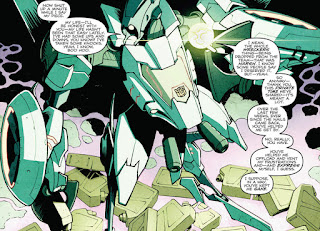#7 Age of Extinction
The general concensus is that Transformers 4: Age of Extinction wasn't a great film even by Michael Bay standards but being a not very good film isn't enough to get you on this list. What gets AoE onto the list is what happened behind the scenes.
Paramount Pictures are one of the biggest movie studios in the West and are very aware of the Chinese movie market which has been predicted will surpass the US market, so Age of Extinction was their way of testing the Asian market. Casting Li Bingbing as a stereotypical aloof martial artist and setting the last third of the film in China and Hong Kong was Paramount's way of trying to appeal to a Chinese audience.
 |
| Michael |
While there was a lot of publicity surrounding the attempts by Chinese gangsters to extort money from the production, including an attack on Bay himself, some of the other aspects of the production may have gone unnoticed. Paramount worked with Jiaflix Enterprises and China Movie Channel in order to film in China, but China Movie Channel is actually a state run outlet for the Chinese Communist Party because all films made in China have to have official approval from the government. Not only though was AoE approved by the government, it was mainly funded by them too.
 |
| Some Chinese Gangsters are awesome! |
While in the Transformers series of films the American government has been portrayed as not always wholesome with the President being portrayed as weak and Kelsey Grammer's character as a warmonger, the Chinese government are depicted as being benevolent rulers who care about all their citizens. One line stood out in the film as Hong Kong was decimated - "We've got to call the central government for help." followed by the Chinese government vowing to rescue their people in Hong Kong. All sounds rather great unless you actually live in Hong Kong.
 |
| Giant Panda/Giant pander joke goes here. |
The film premiered in Hong Kong on 19th June 2014 which angered some investors as they wanted the premier to be in Beijing, but nonetheless the film was a runaway success and became the highest grossing film in Chinese history. For the people of Hong Kong something bigger was happening.
Hong Kong residents were in the middle of an unofficial vote on political reform after Beijing started to take more broad control over Hong Kong. On July 1st an estimated 510,000 people took part in a pro democracy march in Hong Kong, 511 of whom were arrested. Tensions rose in August when China announced that democracy would still exist in Hong Kong but residents could only vote for between 2 or 3 candidates who were essentially hand picked by Beijing. At the end of September protesters began to congregate and occupy parts of Beijing in a movement that in some areas would last until December.
 |
| None of these people want rescuing by "the central government". Rescue from...maybe. |
The protests would become known as The Umbrella Movement as protesters had started carrying umbrellas to protect themselves from the large number of tear gas cannisters being fired at them by police. In surreal scenes, protesters would clean the streets each morning and were on the whole peaceful with police using excess force and even criminal gangs against the demonstrators. The Chinese government began having websites censored with any mentions of the occupation being removed, while annoucing on television that the protests would lead to violence and the death of protesters in a warning that came across as a veiled threat. On December 15th the last occupation site would be cleared by police and The Umbrella Movement brought to an end.
 |
| "They will never take our freedooooo...oh wrong movie." |
While Age of Extinction was a 'popcorn movie' it also doubled as propaganda for China's government which is somewhat dismaying considering how the film and TV industry in the West has the freedom to portray it's own governments as they see fit. No one is going to watch a Michael Bay film for political commentary but it's alarming to see him, Executive Producer Steven Speilberg and an entity as large as Paramount concede so much control to a government in order to access a market. It's a precedent that has worrying connotations in regard to how "patriotic" further films aimed at the Asian market will be.










